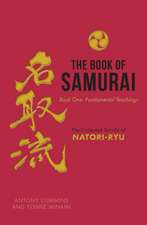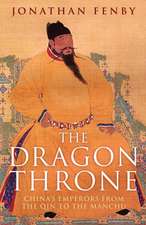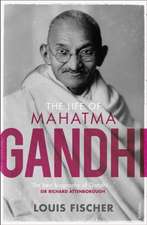The International Order of Asia in the 1930s and 1950s
Autor Nicholas J. White Editat de Shigeru Akitaen Limba Engleză Paperback – 17 noi 2016
| Toate formatele și edițiile | Preț | Express |
|---|---|---|
| Paperback (1) | 469.34 lei 6-8 săpt. | |
| Taylor & Francis – 17 noi 2016 | 469.34 lei 6-8 săpt. | |
| Hardback (1) | 1054.71 lei 6-8 săpt. | |
| Taylor & Francis – 28 ian 2010 | 1054.71 lei 6-8 săpt. |
Preț: 469.34 lei
Nou
Puncte Express: 704
Preț estimativ în valută:
89.82€ • 91.98$ • 74.72£
89.82€ • 91.98$ • 74.72£
Carte tipărită la comandă
Livrare economică 18 martie-01 aprilie
Preluare comenzi: 021 569.72.76
Specificații
ISBN-13: 9781138275898
ISBN-10: 1138275891
Pagini: 332
Dimensiuni: 156 x 234 x 18 mm
Greutate: 0.45 kg
Ediția:1
Editura: Taylor & Francis
Colecția Routledge
Locul publicării:Oxford, United Kingdom
ISBN-10: 1138275891
Pagini: 332
Dimensiuni: 156 x 234 x 18 mm
Greutate: 0.45 kg
Ediția:1
Editura: Taylor & Francis
Colecția Routledge
Locul publicării:Oxford, United Kingdom
Cuprins
Contents: Introduction: the international order of Asia in the 1930s and 1950s: contexts, hypotheses and scope, Shigeru Akita and Nicholas J. White; Part 1 The International Order of Asia, the British Empire and the Sterling Area: British economic interests and the international order of Asia in the 1930s, Shigeru Akita; British imperialism in Asia and Anglo-Japanese relations, 1930s-1950s, Yoichi Kibata; The formation of an industrialization-oriented monetary order in East Asia, Kaoru Sugihara; The Korean-centric Japanese imperium and the transformation of the international system from the 1930s to the 1950s, Bruce Cumings; Sterling, Hong Kong and China in the 1930s and 1950s, Catherine R. Schenk; Malaya and the sterling area reconsidered: continuity and change in the 1950s, Nicholas J. White. Part 2 The International Order of Asia and Asian Regional Economies: Japan's commercial penetration of South and Southeast Asia and the cotton trade negotiations in the 1930s: maintaining relations between Japan, British India and the Dutch East Indies, Naoto Kagotani; China's relations with the international monetary system in the 20th century: historical analysis and contemporary implication, Tomoko Shiroyama; China's economic development and the international order of Asia, 1930-50s, Toru Kubo; Continuity and discontinuity from the 1930s to the 1950s in Northeast China: the 'miraculous' rehabilitation of the Anshan Iron & Steel Company immediately after the Chinese civil war, Toshiro Matsumoto; The survival of economic elites during regime transition: government-merchant cooperation in Taiwan's trade with Japan, 1950-1961, Man-houng Lin; Index.
Notă biografică
Shigeru Akita is Professor of World History at Osaka University, Japan and Nicholas J. White is Reader in Imperial and Commonwealth History at Liverpool John Moores University, UK.
Recenzii
’... the essays in this book provide valuable empirical material on the economy of East Asia in the mid twentieth century, while advancing a number of arguments that scholars of the period will have to take into account. At the same time the book introduces the work of Japanese scholars to an English-speaking audience and contributes to bridging the all-too wide gap between Japanese and Western social science and historical scholarship.’ EH.NET 'Shigeru and White are, in sum, to be congratulated for bringing together an impressive group of senior and early-career researchers whose contributions will be of interest to economic and financial historians of Asia. A volume on monetary and industrial structures might not, at first glance, appear to be of interest to historians of ideas and political institutions. They should set aside instinctive biases.' English Historical Review
Descriere
This book reconsiders the nature and formation of Asia's economic order during the 1930s and 1950s in light of the new historiographical developments in Britain and Japan. Recently several Japanese economic historians have offered a new perspective on Asian history, arguing that the economic growth was fuelled by the phenomenon of intra-Asian trade which began to grow rapidly around the turn of the 19th-20th centuries. On the other side, several British imperial historians, have presented their own provocative interpretation of 'Gentlemanly capitalism and British expansion overseas', in which they emphasize the leading role of the service sector rather than that of British industry in assessing the nature of British expansion overseas. Dealing with issues of trade, economy, nationalism and imperialism, this book provides fresh insights into the development of Asia during the mid-twentieth century.









